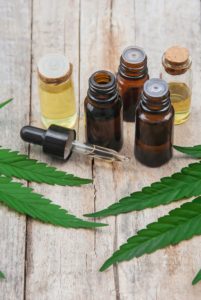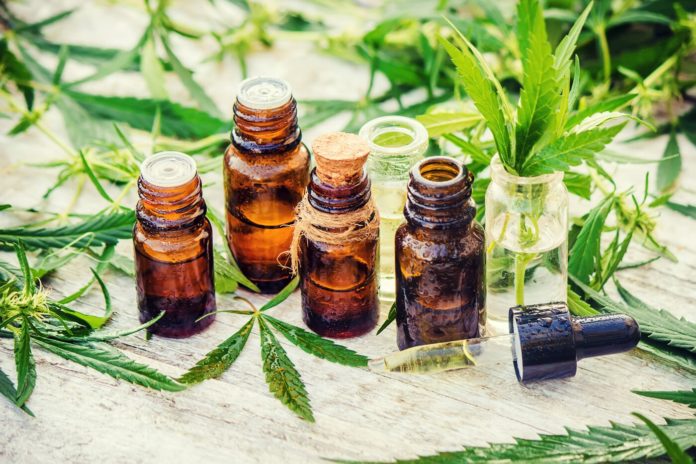No regulations exist governing the quality or content of CBD products sold in the general consumer market. Let that sink in for a moment. No QC. None. So, how do consumers make CBD purchasing decisions? More importantly, what can manufacturers and retailers do to help? Among the most powerful tools available to companies and consumers alike is a certificate of analysis (COA).
When lab testing is performed on a CBD product, samples for testing typically are taken from several portions of a large batch to ensure accurate readings. Once the samples are submitted to a laboratory, they may be subjected to a multitude of screenings in order to determine potency and purity. The resulting COA provides the sample’s cannabinoid profile and, depending upon which screenings are completed, may provide terpene profile, adulterant information and, in some cases, information about other ingredients such as carrier oils.
Understanding lab results
“Breaking a solution down into its chemical components can provide a lot of useful information about how that solution will interact with the human body,” said HeavenSent Hemp co-founder and chief operations officer Ed Harrison. Lab analysis is meant to do just that. How useful the test results are, though, depends upon one’s ability to understand the information COAs provide.
To understand a COA, one must understand each of its components and their importance. “There are many types of cannabis and hemp products, and each has important things to look for on a test result,” said SC Laboratories President Josh Wurzer. “For CBD products, the first thing is the actual concentration or amount of CBD delivered per dose. Research suggests the effects of CBD are highly dose-dependent, and more is not necessarily better. What is more important is to find a dose that works for [the user] and try to hit that dose consistently, making small changes and noting the effects.”
To find the concentration of CBD in a product, look for its cannabinoid profile. Cannabinoids are chemical compounds that act directly and indirectly on the body’s endocannabinoid receptors. They are responsible for the purported therapeutic benefits of hemp products. The compounds include CBD, THC, and lesser-known cannabinoids like CBG, THCVA, CBC, and CBL. The cannabinoid profile shows the presence and concentration of all measured cannabinoids, usually presented as percent of weight or mg/mL.
A product’s terpene profile is another important aspect to look for when considering potency. Terpenes are aromatic oils found in cannabis and many other plants. According to CrescoLabs.com, “When terpenes work together with cannabinoids, in a process known as the entourage effect, the therapeutic potentials increase dramatically.” The terpene profile shows which terpenes are present—such as myrcene, limonene, or linalool—and in what concentration they appear, usually measured as parts per million.

Once potency has been determined, adulterant screenings provide the rest of the picture. “Next, the test results should show that the material is reasonably free of pesticides, chemical contaminants, heavy metals, and food-borne pathogens,” said Wurzer. “Since CBD is usually used for medical purposes, these tests for contamination are even more important [than concentration], in my opinion.” To test for adulterants, laboratories run screenings for heavy metals like arsenic, lead, and mercury; microbes like yeast and mold; bacteria like E-coli and salmonella; mycotoxins, pesticides, and chemical solvents. The presence of any such materials could pose serious health risks.
Trusted results
As mentioned previously, a multitude of screenings is available for testing. So, too, are there a multitude of laboratories to perform the testing. From manufacturers’ in-house labs to large-scale, independent labs, who do you trust?
“In the case of a small business that only interacts with a small population of customers, it’s feasible that each relationship is a personal one. Once, however, your interactions exceed that particular arena, you need other rudiments upon which you can place your confidence,” said Harrison. “One way this is done with laboratories is through certifications. One of the key standards is ISO/IEC 17025.”
According to ISO.org, the website of the International Organization for Standardization, “ISO/IEC 17025 is useful for any organization that performs testing, sampling, or calibration and wants reliable results. This includes all types of laboratories, whether they be owned and operated by government, industry or, in fact, any other organization.
“ISO/IEC 17025 enables laboratories to demonstrate they operate competently and generate valid results, thereby promoting confidence in their work both nationally and around the world. It also helps facilitate cooperation between laboratories and other bodies by generating wider acceptance of results between countries. Test reports and certificates can be accepted from one country to another without the need for further testing, which, in turn, improves international trade.”
According to Harrison, “Other common-sense factors certainly come into play. How long has a given lab been in business? What is their specialty? Do they know the cannabis business or are they just starting out? What methods do they use? Do other organizations recommend them? Do they provide the range of services required?”
Wurzer pointed out another consideration: falsified reports. “SC Labs test results have QR barcodes on them, and consumers can actually scan that barcode to take them directly to the sample results on our website. We definitely encourage consumers to look for and use that barcode to verify test results, as we have come across several forgeries of our certificates of analysis over the years.”
Making results available
With a clear understanding of laboratory test results, it’s easy to see their value—particularly from a consumer’s point of view. As demand for CBD products increases, so too will the number of products coming to market. For manufacturers, having products tested by a trustworthy laboratory—and making publicly available the results of that testing—may be the best way to differentiate themselves from the pack.
Always ask to see a product’s certificate of analysis. —Consumer Reports
Consumer Reports is a nonprofit organization dedicated to helping consumers make informed purchasing decisions. A recent report on ConsumerReports.org warned consumers, “Always also ask to see a product’s COA, or certificate of analysis. That document shows how a product performed on tests checking for CBD and THC levels, and the presence of contaminants. … If an online manufacturer or a retail store doesn’t have the information, or refuses to share it, avoid the product and the retailer.”
The ability to access test results quickly and easily could make all the difference in a consumer’s purchasing decision. No one wants to jump through hoops or have to email a request to learn about a product. Whether posted directly to a webpage or made available for download, consumers want and deserve easy access to testing information. Without such unfettered access, consumers simply will move on to a different product or company—one that makes shopping easier.
Important Testing Aspects for Consumers to Understand
The FDA website includes this quote about dietary supplement safety:
Manufacturers are required to produce dietary supplements in a quality manner and ensure that they do not contain contaminants or impurities, and are accurately labeled according to current Good Manufacturing Practice (cGMP) and labeling regulations.
Lab tests help consumers better understand the degree to which the manufacturer worked to uphold these principles. Here are some basic questions a discerning consumer should ask:
- Does the concentration of cannabinoids shown on the product’s label match the lab test results?
- Does the product’s lot number (typically part of the label) match the batch number shown on the lab report?
- Does the lab report include tests for heavy metals, residual solvents, pesticides, and microbial contaminants?
If no, then consumers don’t really know what they’re taking.
If yes, do those tests show the various levels detected fall below the recommended limits?
If yes, are those limits consistent with a given standards body they trust?
- Is the cannabinoid concentration shown in the lab report a good fit for their health objective? The advice of a qualified health professional may be most appropriate in this case, but they also will need to read the lab report to make a proper determination.
—Ed Harrison, co-founder and chief operations officer, HeavenSent Hemp


